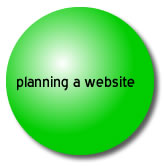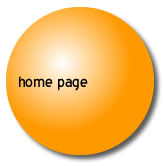
Different types of websites are available depending on the customers requirements. The following is a short breakdown of some of the different types.

A basic flat website usually contains static or unchanging information that does not need to be changed much in a year. This is normally the cheapest type and suites customers that just want an online presence that shows what they do. It is really like a static advert in a printed directory or newspaper.
 This is as above but can be edited by a single user. This suits a site owner who wishes to change the text and images on their site themselves on a regular basis. There are a number of ways this can be achived, but the most cost effective and simplest is to use a programme such as Adobe Contribute, this allows the user to edit the content of a site in a similar way to editing a word document. This is as above but can be edited by a single user. This suits a site owner who wishes to change the text and images on their site themselves on a regular basis. There are a number of ways this can be achived, but the most cost effective and simplest is to use a programme such as Adobe Contribute, this allows the user to edit the content of a site in a similar way to editing a word document.
 This allows for many contributors controlled by an administrator. Typically this would suit an organisation that wants it's members to be able to add information to the site. How this is achived will depend on how complex the site is and what areas you want to give users access to. You could for instance have some or all of the following features: This allows for many contributors controlled by an administrator. Typically this would suit an organisation that wants it's members to be able to add information to the site. How this is achived will depend on how complex the site is and what areas you want to give users access to. You could for instance have some or all of the following features:
- Can update text or images on certain pages only
- Can only access some pages with a password
- Password protected folders for uploading or downloading.
- Can add new stories to a website
- Different levels of security for readers/writers/general public
 If you want users to be able to add information to a site, as described above, or to allow people to search for products then you need a site that works through a database. This allows the site to be interactive with the page being viewed changing to suit the users choices. Although more expensive than a simple flat site with brochure type pages, it will be a more enjoyable experience for the user and could well be worth the investment in time and money to achieve. If you want users to be able to add information to a site, as described above, or to allow people to search for products then you need a site that works through a database. This allows the site to be interactive with the page being viewed changing to suit the users choices. Although more expensive than a simple flat site with brochure type pages, it will be a more enjoyable experience for the user and could well be worth the investment in time and money to achieve.

It is fairly straightforward to add a simple payment system to any site, all you need is something like a PayPal account to which "Buy Now" buttons can be linked. A proper e-commerce account will allow the owner to
add and delete items for sale, change prices individually or globally, set up discounts for multiple purchases, automate the buying process and send acknowledgements for orders to the purchaser and much much more.
To run this sort of site you will need, apart from the site itself, to make arrangements with your bank and also a payment processor such as Sagepay, Worlpay or PayPal. When a customer makes a purchase with a credit or debit card the payment processor will process this payment and pass the money on to your bank. The normal charge for this is around £20 a month plus 2% or 3% or the transaction.
In addition you as the site owner will need to be able to make changes to the site and download orders. The user interface to do this can be a bit daunting at first, but once mastered is no harder to use than a word processing programme.
 There is no such thing as a site design that suits everyone, we all have different requirments. Broadly the more complex a site, the more it costs to create and more time has to go in to maintaining it. If you are maintaining the site yourself then you need to factor in this time to your schedule, and if you want someone else to do it then you need to allow for the cost. There is no such thing as a site design that suits everyone, we all have different requirments. Broadly the more complex a site, the more it costs to create and more time has to go in to maintaining it. If you are maintaining the site yourself then you need to factor in this time to your schedule, and if you want someone else to do it then you need to allow for the cost.
|





